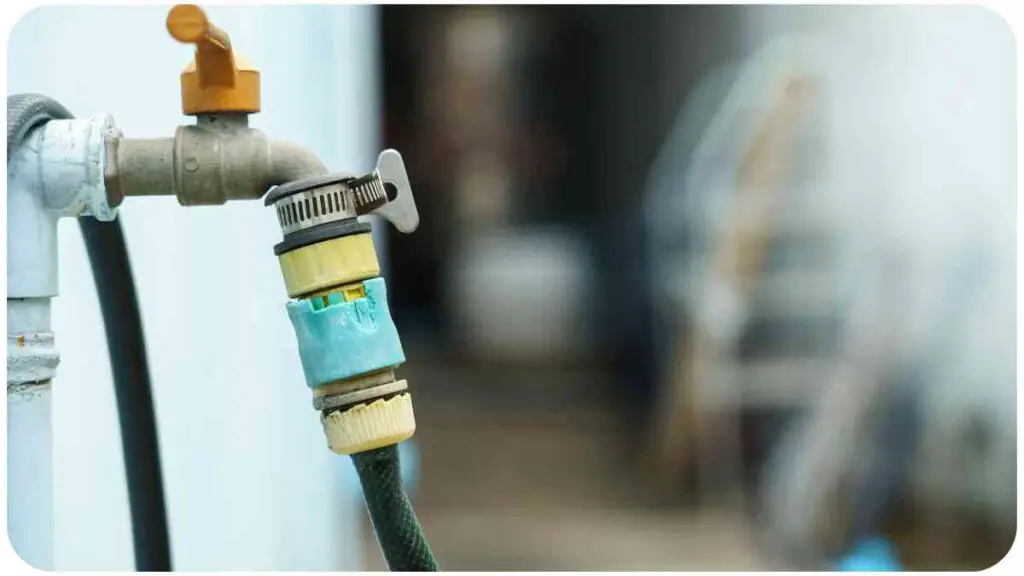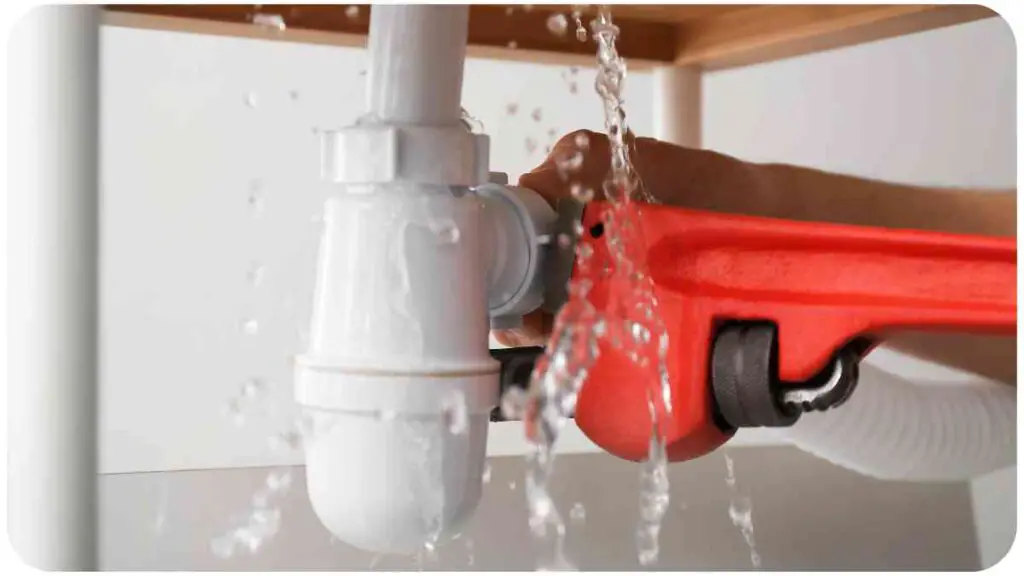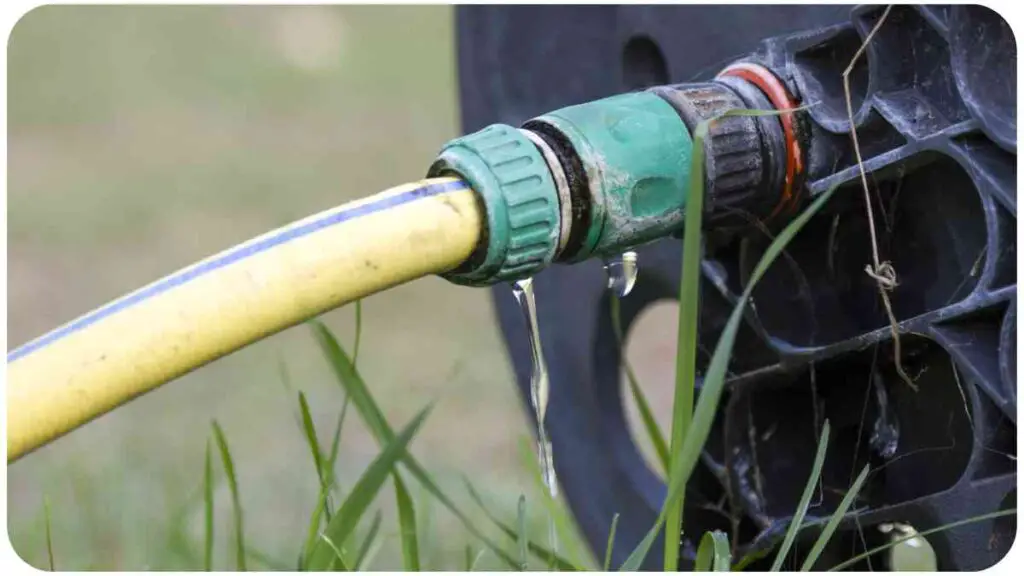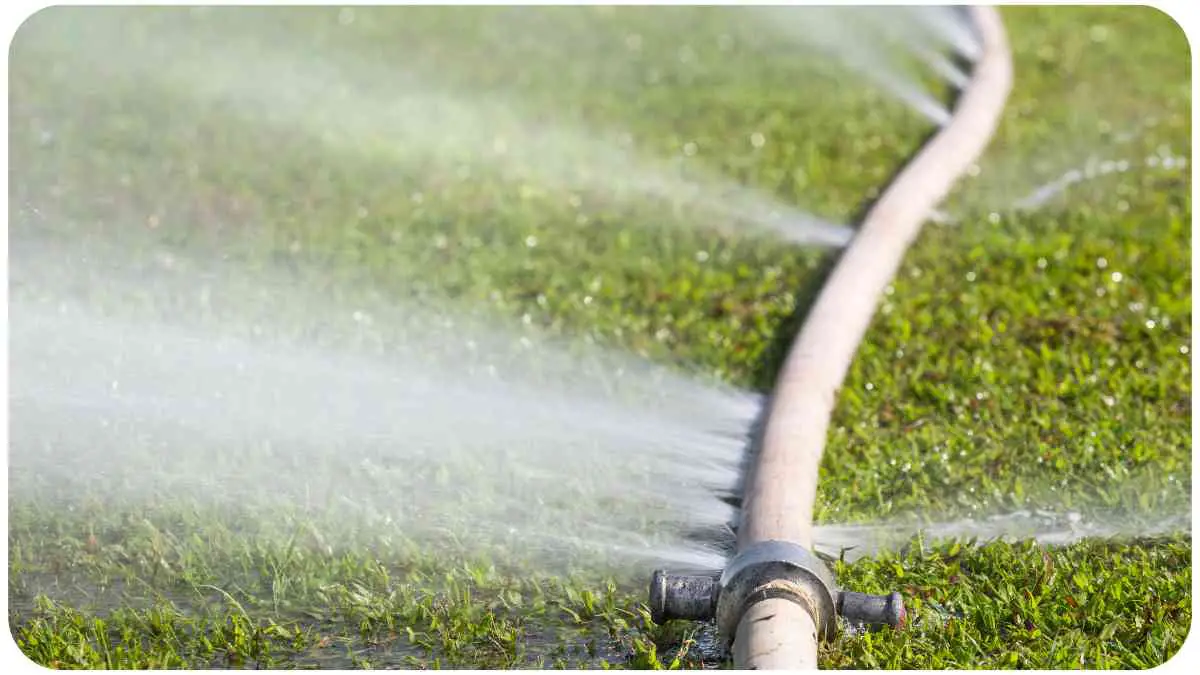Garden hose leaks can be a frustrating problem for any gardener or homeowner. Whether it’s a slow drip or a sudden spray, addressing a leaking hose connection promptly is crucial to avoid water wastage and potential damage to your garden.
In this guide, we’ll explore the common causes of leaks and provide a step-by-step solution to fix them. Let’s dive in!
| Takeaway |
|---|
| Regularly inspect your garden hose for signs of wear, loose connections, or damaged O-rings to catch potential issues early. |
| Ensure proper torque when tightening hose fittings, following the recommended values based on your hose size to prevent leaks. |
| Replace damaged O-rings promptly, choosing the right material for your specific application to ensure effective sealing. |
| Utilize hose repair kits for minor cracks, selecting the appropriate type based on your repair needs for quick and durable solutions. |
| Consider upgrading to leak-proof connectors for a long-term solution to persistent hose connection issues. |
| Implement preventive measures like regular inspection, proper storage, avoiding kinks, and winterization to extend the life of your garden hose. |
| Seek professional help if DIY attempts fail, for major damage, or with complex irrigation systems to prevent further complications. |
2. Understanding the Causes of Leaks

2.1 Wear and Tear
Garden hoses, like any other tool, can wear out over time. Exposure to sunlight, temperature fluctuations, and constant bending can lead to material degradation. It’s essential to recognize the signs of wear and tear early on.
Is your garden facing fungal challenges? Learn effective identification and treatment methods to ensure your plants thrive, using our guide on fungal diseases.
Table: Common Signs of Hose Connection Leaks
| Signs of Wear | Description |
|---|---|
| Cracks | Visible openings or splits in the hose material |
| Frayed Ends | Tattered or damaged hose ends |
| Bulging | Swollen areas indicating internal damage |
2.2 Loose Connections
Loose hose connections are another prevalent cause of leaks. Over time, fittings may become untightened due to regular use, leading to water seepage at the joints. Properly securing these connections is a simple yet effective solution.
Table: Recommended Torque for Hose Fittings
| Hose Size | Torque Recommendation |
|---|---|
| 1/2 inch | 20-25 ft-lbs |
| 3/4 inch | 30-35 ft-lbs |
| 1 inch | 40-45 ft-lbs |
Ensuring the correct torque when reconnecting your hose fittings can significantly reduce the likelihood of leaks.
2.3 Damaged O-rings
O-rings are small, rubber gaskets located in hose fittings, preventing water from escaping. Over time, these can become damaged or worn out, leading to leaks. Identifying and replacing faulty O-rings is a crucial step in fixing hose connection issues.
Maintain the tranquility of your garden fountain with DIY tips for clear water flow. Discover essential maintenance techniques in our guide on garden fountain maintenance.
Table: Types of O-rings and Their Applications
| O-ring Material | Application |
|---|---|
| Nitrile | General purpose, water-resistant |
| Viton | Chemical-resistant, high-temperature applications |
| EPDM | UV-resistant, outdoor use |
Choosing the right O-ring material for your hose connection ensures long-lasting and effective sealing.
3. Tools and Materials You’ll Need

Before embarking on fixing a leaking garden hose connection, gather the necessary tools and materials. Having everything ready will make the process smoother and more efficient.
- Adjustable wrench
- Replacement O-rings
- Hose repair kit
- Pipe thread sealant
- Bucket for water drainage
- Cloth or towel for cleaning
- Replacement connectors (if needed)
4. Step-by-Step Guide to Fixing a Leaking Garden Hose Connection
4.1 Inspection
Begin by inspecting your garden hose for visible signs of wear, loose connections, or damaged O-rings. Use the following table to identify common signs of hose connection leaks.
Table: Common Signs of Hose Connection Leaks
| Signs of Wear | Description |
|---|---|
| Cracks | Visible openings or splits in the hose material |
| Frayed Ends | Tattered or damaged hose ends |
| Bulging | Swollen areas indicating internal damage |
Take note of any issues before proceeding to the next steps.
Illuminate your outdoor space efficiently! Troubleshoot and fix issues with solar lights using our charging tips for optimal performance.
4.2 Tightening Loose Connections

Use an adjustable wrench to tighten any loose hose connections. Refer to the table for the recommended torque values based on your hose size.
Table: Recommended Torque for Hose Fittings
| Hose Size | Torque Recommendation |
|---|---|
| 1/2 inch | 20-25 ft-lbs |
| 3/4 inch | 30-35 ft-lbs |
| 1 inch | 40-45 ft-lbs |
Ensure a snug fit without over-tightening to avoid damaging the hose or fittings.
4.3 Replacing Damaged O-rings
If your inspection reveals damaged O-rings, it’s crucial to replace them promptly. Use the table below to understand the types of O-rings and their suitable applications.
Table: Types of O-rings and Their Applications
| O-ring Material | Application |
|---|---|
| Nitrile | General purpose, water-resistant |
| Viton | Chemical-resistant, high-temperature applications |
| EPDM | UV-resistant, outdoor use |
Select the appropriate replacement O-ring based on your specific needs. Carefully remove the old O-ring and install the new one securely.
4.4 Repairing Minor Cracks
For minor cracks in the hose, consider using a hose repair kit. These kits typically include patches or connectors that can effectively seal small leaks. Compare the available kits using the table below to choose the most suitable one for your situation.
Revitalize your garden soil for healthier plants. Explore essential tips and techniques in our comprehensive guide on garden soil rejuvenation.
Table: Comparison of Hose Repair Kits
| Kit Type | Features |
|---|---|
| Patch Kit | Adhesive patches for quick fixes |
| Connector Kit | Replacement fittings for cracks |
Follow the instructions provided with the kit to ensure a proper and durable repair.
4.5 Upgrading to Leak-Proof Connectors
If you frequently experience hose connection leaks, consider upgrading to leak-proof connectors. Explore the top-rated options using the following table.
Table: Top-rated Leak-Proof Hose Connectors
| Connector Brand | Features |
|---|---|
| AquaSeal | Double-sealed for maximum leak prevention |
| SureGrip | Easy-grip design with enhanced sealing |
| ProSeal | Durable construction with built-in leak guard |
Investing in high-quality connectors can provide a long-term solution to persistent hose connection issues.
5. Tips for Preventing Future Leaks
Preventing future leaks is just as important as fixing current issues. Here are some practical tips to ensure the longevity of your garden hose connections:
- Regular Inspection: Conduct routine checks for wear, loose connections, and damaged O-rings. Early detection can prevent minor issues from becoming major leaks.
- Proper Storage: Store your garden hose properly to avoid exposure to extreme weather conditions. A hose reel or storage container can protect it from UV rays and physical damage.
- Avoid Kinks: Uncoil the hose fully when in use to prevent kinking, which can lead to material stress and eventual leaks.
- Winterization: If you live in a cold climate, drain the water from your hose before winter to prevent freezing and potential damage.
- Use Adequate Hose Length: Avoid stretching the hose to its limit, as this can cause undue stress on connections. Choose a hose length suitable for your needs.
6. Expert Insights: Common Challenges in Hose Maintenance
6.1 Interview with Gardening Expert: Sarah Green Thumb
We had the pleasure of interviewing Sarah Green Thumb, a renowned gardening expert, to gain insights into common challenges in hose maintenance. Sarah shared her top 5 tips for keeping garden hoses in top condition.
Table: Sarah’s Top 5 Tips for Hose Maintenance
| Tip No. | Maintenance Advice |
|---|---|
| 1 | “Inspect hoses regularly for wear and tear.” |
| 2 | “Invest in quality connectors and O-rings.” |
| 3 | “Avoid dragging hoses over rough surfaces.” |
| 4 | “Store hoses away from direct sunlight.” |
| 5 | “Replace old hoses before they become problematic.” |
Sarah emphasizes the importance of proactive maintenance to avoid common hose issues.
6.2 Troubleshooting: When to Seek Professional Help
While many hose connection issues can be resolved with DIY solutions, there are instances where professional assistance is necessary. Here are signs that it’s time to seek expert help:
- Persistent Leaks: If you’ve tried multiple fixes, and leaks persist, a professional may identify underlying issues that DIY methods can’t address.
- Major Damage: Significant damage, such as extensive cracks or ruptures, may require the expertise of a professional hose repair service.
- Complex Systems: For intricate irrigation systems or specialized hoses, professionals with specific knowledge may be needed to ensure proper repairs.
Remember, timely intervention can prevent further damage and save you from costly repairs down the line.
Is soil compaction limiting your plant growth? Discover effective tips for better growth in our guide on soil compaction. Ensure your plants thrive!
7. Conclusion
Fixing a leaking garden hose connection is a manageable task with the right tools and knowledge. By understanding the causes of leaks, using proper maintenance techniques, and incorporating expert tips, you can keep your garden hose connections leak-free and ensure a smooth watering experience for your plants.
Remember to regularly inspect and maintain your hoses to catch potential issues early and enjoy a hassle-free gardening experience.
In the next section, we’ll dive deeper into the intricacies of each step, providing detailed instructions and additional insights to empower you in your journey to leak-free garden hose connections. Stay tuned for a comprehensive breakdown of each element and expert advice to enhance your hose maintenance skills.
Further Reading
- Bob Vila – Repairing a Garden Hose: Explore comprehensive insights into repairing garden hoses, covering various issues and solutions.
- Northern Tool – Learn Repairing a Garden Hose: Gain practical knowledge and step-by-step guides on repairing garden hoses from Northern Tool’s expertise.
- Angi – Hose Bib Leaks: Common Fixes by Plumbers: Discover expert advice on common hose bib leaks and effective fixes provided by professional plumbers.
FAQs
How can I identify if my garden hose has a connection leak?
Regularly inspect your hose for visible signs such as cracks, frayed ends, or bulging. Check for water puddles around connections during use.
What is the recommended torque for tightening hose fittings?
Refer to the hose size-specific torque recommendations. For instance, a 1/2-inch hose typically requires 20-25 ft-lbs torque.
Can damaged O-rings be repaired, or should they be replaced?
Damaged O-rings should be replaced. Select the appropriate replacement based on the material suitable for your application.
Are hose repair kits effective for fixing minor cracks?
Yes, hose repair kits, especially those with adhesive patches or connectors, can effectively seal minor cracks, providing a quick and durable solution.
How do I prevent hose connection leaks in the future?
Regular inspection, proper storage, avoiding kinks, winterization in cold climates, and using an adequate hose length are key preventive measures.
When should I seek professional help for hose connection issues?
If leaks persist after DIY attempts, for major damage, or with complex irrigation systems, seeking professional help is advisable. Timely intervention can prevent further damage.

Hi! My name is Hellen James, and I’m here to help you with your home-maintenance needs. Whether it’s building a better yard or just trying to fix a garden—I can show you how.


